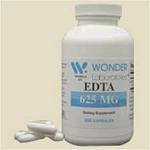What To Do If You Have Been Poisoned by Lead
 Many RRPedia users, attendees of my seminars about the RRP Rule and a few others at several RRP workshops I have participated at have asked what should be done if someone has been poisoned by lead. Perhaps you might even know a carpenter poisoned by lead. I am not an expert in this area but thought it would be helpful to do some research and offer some guidance on what to do if affected by lead poisoning. You can find out about the symptoms of lead poisoning by reading this previous post. However, keep in mind that the only way to know for sure if someone has been poisoned by lead and at what level would be a blood test. If you do RRP work it would be a good idea to consider asking your doctor to test for lead the next time you visit with him or her. If after reading about the symptoms of lead you are concerned that you might already be poisoned by lead, contact your doctor right away.
Many RRPedia users, attendees of my seminars about the RRP Rule and a few others at several RRP workshops I have participated at have asked what should be done if someone has been poisoned by lead. Perhaps you might even know a carpenter poisoned by lead. I am not an expert in this area but thought it would be helpful to do some research and offer some guidance on what to do if affected by lead poisoning. You can find out about the symptoms of lead poisoning by reading this previous post. However, keep in mind that the only way to know for sure if someone has been poisoned by lead and at what level would be a blood test. If you do RRP work it would be a good idea to consider asking your doctor to test for lead the next time you visit with him or her. If after reading about the symptoms of lead you are concerned that you might already be poisoned by lead, contact your doctor right away.
According to the Mayo Clinic Web site, the first step that should be taken if someone has been found to have lead poisoning is to remove the source of the contamination. The clinic also suggests that if you can't remove lead from your environment, you may at least be able to reduce the likelihood that it will cause problems. One option to reduce lead exposure would be sealing the surface to cover and prevent direct contact with, rather than remove lead paint.
 Lead poisoning occurs in children and adults when lead builds up in their bodies, often over months or years. It is important to know that even small amounts of lead can cause serious health problems and possibly long term effects. Children under the age of 6 are especially vulnerable to lead poisoning, but adults, particularly those who do RRP related work can suffer serious consequences due to long term and or multiple exposures. At very high levels of exposure, lead poisoning can be fatal.
Lead poisoning occurs in children and adults when lead builds up in their bodies, often over months or years. It is important to know that even small amounts of lead can cause serious health problems and possibly long term effects. Children under the age of 6 are especially vulnerable to lead poisoning, but adults, particularly those who do RRP related work can suffer serious consequences due to long term and or multiple exposures. At very high levels of exposure, lead poisoning can be fatal.
For children and adults with relatively low blood lead levels, simply avoiding any additional exposure to lead may be enough to reduce levels and avoid long term consequences.
 For more severe cases of lead poisoning, your doctor may recommend treatments such as Chelation therapy or EDTA therapy. Chelation therapy is a treatment that includes taking a medication that binds with the lead in your body and is eventually excreted in your urine. EDTA therapy is typically used for more serious cases. This treatment includes treating the patient’s blood with a chemical called ethylenediaminetetraacetic acid (EDTA). Depending on the patient’s blood lead level, more than one treatment may be required. Unfortunately, in severe cases, it may not be possible to reverse damage that has already occurred. Children with lead toxicity may also be iron deficient and can be treated with iron supplements.
For more severe cases of lead poisoning, your doctor may recommend treatments such as Chelation therapy or EDTA therapy. Chelation therapy is a treatment that includes taking a medication that binds with the lead in your body and is eventually excreted in your urine. EDTA therapy is typically used for more serious cases. This treatment includes treating the patient’s blood with a chemical called ethylenediaminetetraacetic acid (EDTA). Depending on the patient’s blood lead level, more than one treatment may be required. Unfortunately, in severe cases, it may not be possible to reverse damage that has already occurred. Children with lead toxicity may also be iron deficient and can be treated with iron supplements.

 Looking for accurate information about the EPA RRP rule?
Looking for accurate information about the EPA RRP rule? 


